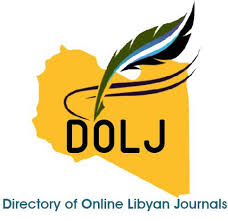Abnormal Serum Concentrations of Creatinine, Phosphorous, Triglycerides and Total Cholesterol in Males with End-Stage Renal Disease: A Comparative Study
DOI:
https://doi.org/10.54361/Keywords:
ESRD, creatinine, phosphorous, triglycerides, total cholesterol, t-test; correlationAbstract
This study investigated the concentration abnormalities of serum creatinine (SCr), serum phosphorous (SP), serum triglycerides (STg) and serum total Cholesterol (STc) in males suffering from End-StageRenal Disease (ESRD). The serum concentration of each biochemical was determined in 30 males with ESRD (patient group) and in 30 normal males (control group). Except for STc, the mean concentration for all the biochemicals in the patient group was higher than the mean of the equivalent biochemical in the control group. However, the difference was only significant in case of SCr pair and SP pair (P < 0.01). Two significant relationships (P < 0.05) were found in patient group between two pairs: SCr-SP and STg-STc. These two relationships were not recorded in the control group. Similarly, the only significant relationship between age and SCr (P < 0.05) found in the control group was not recorded in the patient group. These limited differences in relationships were accompanied by limited differences in similarity ratio according to the results of cluster analysis. The findings of this study indicate that ESRD has a diverse effect on serum concentration of the studied biochemicals, with more prominent impact on SCr and SP. According to the results of statistical analysis, SP can be used in combination with SCr for early identification of ESRD.
Downloads
References
Murphree DD and Thelen SM. Chronic kidney disease in primary care. The Journal of the American Board of Family Medicine. 2010; 23(4):542-550.
Staples A and Wong C. Risk factors for progression of chronic kidney disease. Current opinion in paediatrics. 2010; 22(2):161-169.
Thomas R, Kanso A and Sedor JR. Chronic kidney disease and its complications. Primary care: Clinics in office practice. 2008; 35(2):329-344.
Ray L, Nanda SK, Chatterjee A, Sarangi R and Ganguly S. A comparative study of serum aminotransferases in chronic kidney disease with and without end-stage renal disease: Need for new reference ranges. International Journal of Applied and Basic Medical Research. 2015; 5(1):31-35.
Amin, N, Mahmood RT, Asad MJ, Zafar M and Raja AM. Evaluating urea and creatinine levels in chronic renal failure pre and post dialysis: A prospective study. Journal of Cardiovascular Disease. 2014; 2(2):1-4.
National Kidney Foundation. K/DOQI Clinical Practice Guidelines for chronic kidney disease: evaluation, classification, and stratification. American journal of kidney diseases. 2002; 39(2 Supple 1):S1–266.
Nigwekar SU, Tamez H and Thadhani RI. Vitamin D and chronic kidney disease-mineral bone disease (CKD-MBD). BoneKey reports, 2014; 3.
Qiu Y, Lv X, Su H, Jiang G, Li C and Tian J. Structural and functional brain alterations in end stage renal disease patients on routine hemodialysis: a voxel-based morphometry and resting state functional connectivity study. Plos one.2014; 9(5):e98346.
Eckardt KU. Anaemia in end‐stage renal disease: pathophysiological considerations. Nephrology Dialysis Transplantation. 2001; 16(suppl7):2-8.
Cukor,D, Coplan J, Brown C, Friedman S, Cromwell-SmithA, Peterson RA and Kimmel PL. Depression and anxiety in urban hemodialysis patients. Clinical Journal of the American Society of Nephrology. 2007; 2(3):484-490.
Chung S, Koh ES, Shin SJ and Park CW. Malnutrition in patients with chronic kidney disease. Open Journal of Internal Medicine. 2012; 2(02):89-99.
Flessner MF, Wyatt SB, Akylbekova EL, Coady S, Fulop T, Lee, F, Taylor HA and Crook, E.Prevalence and awareness of CKD among African Americans: The Jackson heart study. American journal of kidney diseases.2009; 53(2):238-247.
Sameiro-Faria MD, Ribeiro S, Costa E, Mendonça D, Teixeira L, Rocha-Pereira P, Fernandes J, Nascimento H, Kohlova M, Reis F and Amado L, Risk factors for mortality in hemodialysis patients: two-year follow-up study. Disease markers, 2013; 35(6):791- 798.
Kundhal K and Lok CE. Clinical epidemiology of cardiovascular disease in chronic kidney disease. Nephron Clinical Practice. 2005; 101(2):c47-c52.
Go AS, Chertow GM, Fan D, McCulloch CE and Hsu CY. Chronic kidney disease and the risks of death, cardiovascular events, and hospitalization. New England Journal of Medicine. 2004; 351(13):1296-1305.
Pahl MV, Gollapudi S, Sepassi L, Gollapudi P, Elahimehr R and Vaziri ND. Effect of end-stage renal disease on B-lymphocyte subpopulations, IL-7, BAFF and BAFF receptor expression. Nephrology Dialysis Transplantation. 2009; 25(1):205-212.
Waheed AA, Pedraza F, Lenz O and Isakova T. Phosphate control in end-stage renal disease: barriers and opportunities. Nephrology Dialysis Transplantation. 2013; 28(12):2961-2968.
Coladonato JA, Control of hyperphosphatemia among patients with ESRD. Journal of the American Society of Nephrology.2005; 16(11 suppl 2):S107-S114.
Samouilidou EC, Karpouza AP, Kostopoulos V, Bakirtzi T, Pantelias K, Petras D, Tzanatou-Exarchou H and JGrapsa E. Lipid abnormalities and oxidized LDL in chronic kidney disease patients on hemodialysis and peritoneal dialysis. Renal failure. 2012; 34(2):160-164.
Prichard SS. Impact of dyslipidemia in end-stage renal disease. Journal of the American Society of Nephrology. 2003; 14(suppl 4):S315-S320.
Omar AA, Aboud RR, Albakoush W and Anwesre RA. Effect of ESRD on concentration of serum creatinine, urea and glucose in male patients. MAYFEB Journal of Chemistry and Chemical Engineering.2016; 1:1-9.
Quantitative determination of creatinine, Spinreact company kit, Available at: www.spinreact.com/files/Inserts/Bioquimica/BSIS13_CREA-J_2016.pdf, lastaccessed: 19 DEC 2016.
Quantitative determination of phosphorus, Spinreact company kit, Available at: www.spinreact.com/files/Inserts/Bioquimica/BSIS15_P-UV_02-2016.pdf, lastaccessed: 19 Aug 2017.
Quantitative determination of cholesterol, Spinreact company kit, Available at :www.spinreact.com/files/Inserts/Bioquimica/BSIS11_COLEST_02-2015.pdf, lastaccessed: 19 Aug 2017.
Quantitative determination of triglycerides, Spinreact company kit, Available at: www.spinreact.com/files/Inserts/Bioquimica/BSIS49_TG-LQ_2016.pdf, last accessed: 19 Aug 2017.
Meenakshi GG. Effect of dialysis on certain biochemical parameters in chronic renal failure patients. International Journal of Contemporary Medical Research. 2016; 3(10):2869-2871.
Roy H, Banerjee P, Dan S, Rahaman M, Sengupta M. and Bal C. Insulin resistance in end stage renal disease (ESRD) patients in Eastern India: A population based observational study. Journal of Drug Delivery and Therapeutics. 2014; 4(1):127-130.
Alcelik A, Tosun M, Ozlu MF, Eroglu M, Aktas G, Kemahli E, Savli H and Yazici, M. Serum levels of omentin in end-stage renal disease patients. Kidney and Blood Pressure Research. 2012; 35(6):511-516.
Peralta CA, Shlipak MG, Judd S, Cushman M, McClellan W, Zakai NA, Safford MM, Zhang X, Muntner P and Warnock D. Detection of chronic kidney disease with creatinine, cystatin C, and urine albumin-to-creatinine ratio and association with progression to end- stage renal disease and mortality. Jama, 2011; 305(15):1545-1552.
Samra M and Abcar AC. False estimates of elevated creatinine. The Permanente Journal. 2012; 16(2):51-52.
Freethi R, Raj AV, Ponniraivan K, Khan MR, Sundhararajan A and Venkatesan, Study of serum levels of calcium, phosphorus and alkaline phosphatase in chronic kidney disease. International Journal of Medical Research & Health Sciences. 2016; 5(3):49-56.
Giachelli CM. The emerging role of phosphate in vascular calcification. Kidney international. 2009; 75(9):890-897.
Melamed ML, Eustace JA, Plantinga L, Jaar BG, Fink NE, Coresh J, Klag MJ and Powe NR. Changes in serum calcium, phosphate, and PTH and the risk of death in incident dialysis patients: A longitudinal study. Kidney International. 2006; 70(2):351–357.
Qunibi WY. Consequences of hyperphosphatemia in patients with end-stage renal disease (ESRD). Kidney International. 2004; 66:S8-S12.
Askar AM. Hyperphosphatemia: The hidden killer in chronic kidney disease. Saudi medical journal; 2015; 36(1):13-19.
Foley RN. Phosphate levels and cardiovascular disease in the general population. Clinical Journal of the American Society of Nephrology. 2009; 4(6):1136-1139.
Natoli JL, Boer R, Nathanson BH, Miller RM, Chiroli S, Goodman WG and Belozeroff, V. Is there an association between elevated or low serum levels of phosphorus, parathyroid hormone, and calcium and mortality in patients with end stage renal disease? A meta-analysis. BMC Nephrology. 2013; 14(1):88-103.
Kushner PA and Cobble ME. Hypertriglyceridemia: the importance of identifying patients at risk. Postgraduate medicine; 2016; 128(8):848-858.
Oztas Y. Hypocholesterolemia: A Neglected Laboratory Finding. ActaMedica. 2016; 47(1):19-22.
Pandya V, Rao A and Chaudhary K. Lipid abnormalities in kidney disease and management strategies. World journal of nephrology. 2015; 4(1):83-91.
Keane WF, Tomassini JE and Neff DR. Lipid abnormalities in patients with chronic kidney disease: implications for the pathophysiology of atherosclerosis. Journal of atherosclerosis and thrombosis. 2013; 20(2):123-133.
Liu Y, Coresh J, Eustace JA, Longenecker JC, Jaar B, Fink NE, Tracy RP, Powe NR and Klag MJ. Association between cholesterol level and mortality in dialysis patients: role of inflammation and malnutrition. Jama, 2004; 291(4):451-459.
Downloads
Published
Issue
Section
License
Copyright (c) 2018 Abdounasser Albasher Omar, Nada Salem, Sundus Sagar, Aisha Hamid, Hajer Diab, Maryam Mohammed Alnnas (Author)

This work is licensed under a Creative Commons Attribution-NonCommercial-NoDerivatives 4.0 International License.
Open Access Policy
Libyan journal of medical Research (LJMR).is an open journal, therefore there are no fees required for downloading any publication from the journal website by authors, readers, and institution.
The journal applies the license of CC BY (a Creative Commons Attribution 4.0 International license). This license allows authors to keep ownership f the copyright of their papers. But this license permits any user to download , print out, extract, reuse, archive, and distribute the article, so long as appropriate credit is given to the authors and the source of the work.
The license ensures that the article will be available as widely as possible and that the article can be included in any scientific archive.
Editorial Policy
The publication of an article in a peer reviewed journal is an essential model for Libyan journal of medical Research (LJMR). It is necessary to agree upon standards of expected ethical behavior for all parties involved in the act of publishing: the author, the journal editorial, the peer reviewer and the publisher.
Any manuscript or substantial parts of it, submitted to the journal must not be under consideration by any other journal. In general, the manuscript should not have already been published in any journal or other citable form, although it may have been deposited on a preprint server. Authors are required to ensure that no material submitted as part of a manuscript infringes existing copyrights, or the rights of a third party.
Authorship Policy
The manuscript authorship should be limited to those who have made a significant contribution and intellectual input to the research submitted to the journal, including design, performance, interpretation of the reported study, and writing the manuscript. All those who have made significant contributions should be listed as co-authors.
Others who have participated in certain substantive aspects of the manuscript but without intellectual input should only be recognized in the acknowledgements section of the manuscript. Also, one of the authors should be selected as the corresponding author to communicate with the journal and approve the final version of the manuscript for publication in the LJMR.
Peer-review Policy
- All the manuscripts submitted to LJMR will be subjected to the double-blinded peer-review process;
- The manuscript will be reviewed by two suitable experts in the respective subject area.
- Reports of all the reviewers will be considered while deciding on acceptance/revision or rejection of a manuscript.
- Editor-In-Chief will make the final decision, based on the reviewer’s comments.
- Editor-In-Chief can ask one or more advisory board members for their suggestions upon a manuscript, before making the final decision.
- Associate editor and review editors provide administrative support to maintain the integrity of the peer-review process.
- In case, authors challenge the editor’s negative decision with suitable arguments, the manuscript can be sent to one more reviewer and the final decision will be made based upon his recommendations.












